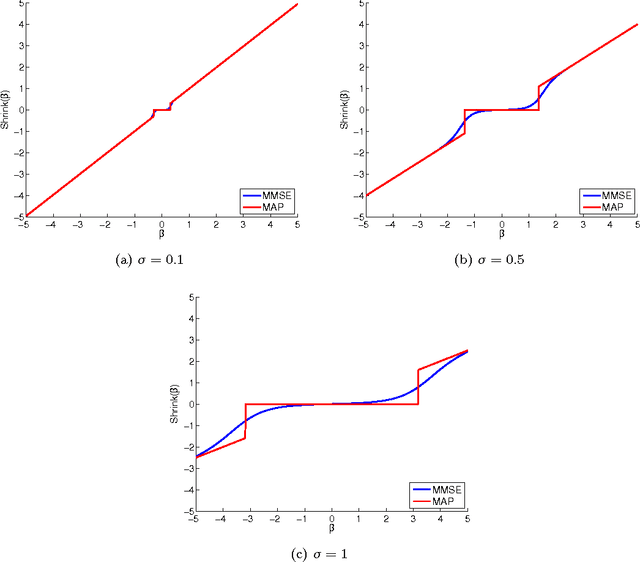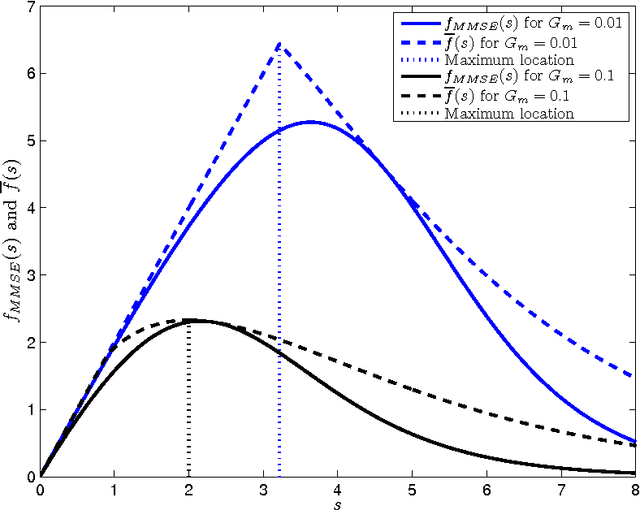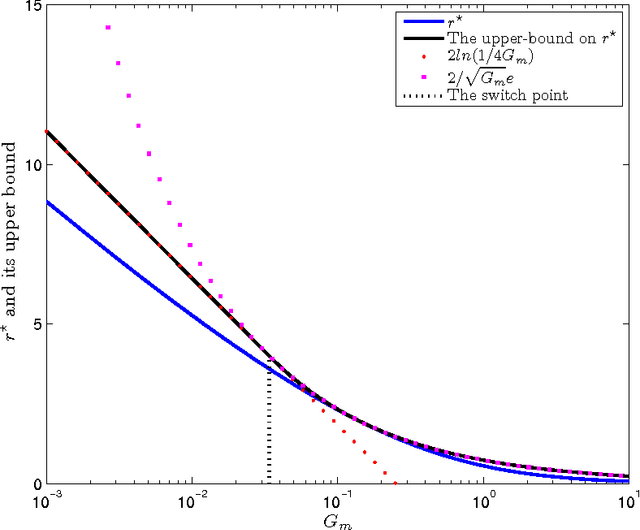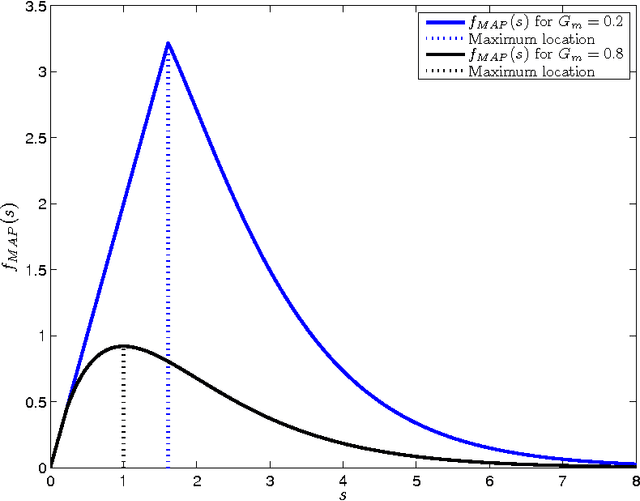On MMSE and MAP Denoising Under Sparse Representation Modeling Over a Unitary Dictionary
Paper and Code
Mar 21, 2010



Among the many ways to model signals, a recent approach that draws considerable attention is sparse representation modeling. In this model, the signal is assumed to be generated as a random linear combination of a few atoms from a pre-specified dictionary. In this work we analyze two Bayesian denoising algorithms -- the Maximum-Aposteriori Probability (MAP) and the Minimum-Mean-Squared-Error (MMSE) estimators, under the assumption that the dictionary is unitary. It is well known that both these estimators lead to a scalar shrinkage on the transformed coefficients, albeit with a different response curve. In this work we start by deriving closed-form expressions for these shrinkage curves and then analyze their performance. Upper bounds on the MAP and the MMSE estimation errors are derived. We tie these to the error obtained by a so-called oracle estimator, where the support is given, establishing a worst-case gain-factor between the MAP/MMSE estimation errors and the oracle's performance. These denoising algorithms are demonstrated on synthetic signals and on true data (images).
 Add to Chrome
Add to Chrome Add to Firefox
Add to Firefox Add to Edge
Add to Edge